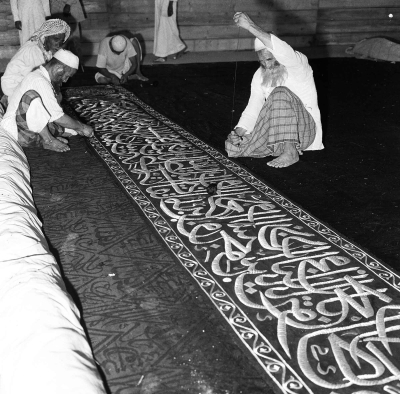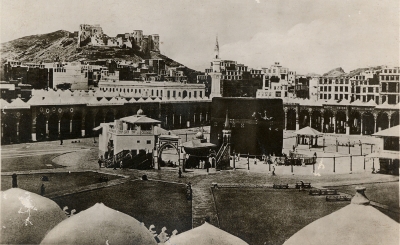
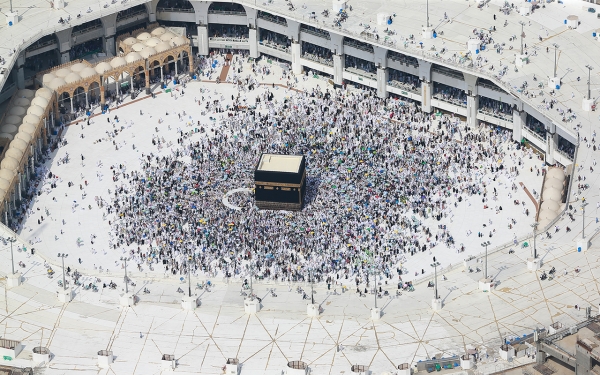
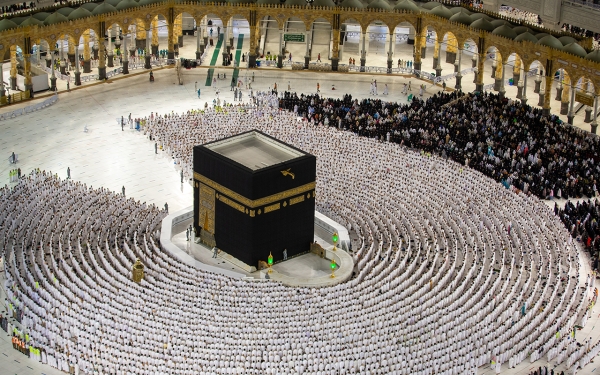
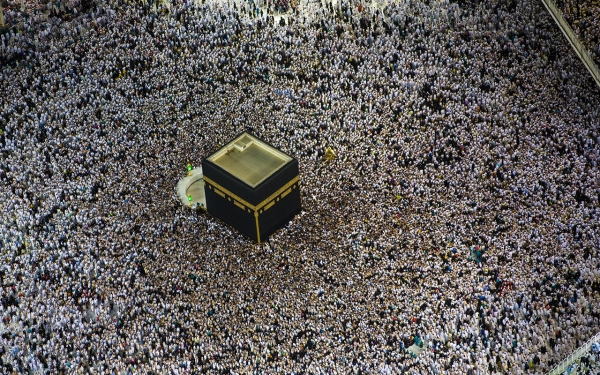
The Mataf of the Grand Mosque refers to the marble area surrounding al-Kaaba al-Musharrafa within the Grand Mosque. It is also called Sahn al-Mataf. In this area, Muslims perform their circumambulation (Tawaf) around the sacred al-Kaaba al-Musharrafa at all times, day and night. There are different types of Tawaf, which include: Tawaf al-Umrah, Tawaf al-Qudum for Hajj, Tawaf al-Ifadah, a pillar of Hajj, Tawaf al-Wadaa, and Tawaf al-Tatowe.
Mataf flooring in the Grand Mosque
The flooring of the Tawaf area is distinctive for its cold marble, which retains its coolness at all times, unaffected by weather factors, including the high temperatures in summer. The coolness from the surrounding arcades flows into the mataf.
Expansion of the mataf in the Grand Mosque
Historically, the mataf was directly adjacent to al-Kaaba due to its limited space, which was bordered by the houses of Makkah's residents. The expansion of this area began with the subsequent enlargements made to the Grand Mosque. During the prophetic era and the caliphate of Abu Bakr al-Siddiq, may Allah be pleased with him, no expansions to the mataf were witnessed. Caliph Umar Ibn al-Khattab, may Allah be pleased with him, was the first to expand it. He achieved this by purchasing the houses surrounding the mosque and constructing a wall around the mataf to separate it from the rest of the structures. In 647, Caliph Uthman Ibn Affan, may Allah be pleased with him, bought houses near the Grand Mosque and initiated a new expansion, introducing arcades to the edges of the mataf for the first time.
Attention to mataf in the Grand Mosque
Muslim rulers and princes who governed Makkah al-Mukarramah prioritized the mataf of the Grand Mosque. Abdullah Bin al-Zubair, may Allah be pleased with him, was the first to tile it in 686. The first to pave its ground with marble was al-Waleed Bin Abdulmalik in 737. This tiling was completed by the Abbasid Caliph al-Mutadhid in 897. Following them, numerous expansions and renovations took place in the mataf and the surrounding arcades until the beginning of the Saudi era.
Care for the mataf in the Grand Mosque during the Saudi Era
During the Saudi era, the pebbles, pathways, and the four maqams were removed from the mataf of the Grand Mosque. The mouth of the Zamzam well was lowered, and the megaphones and pathways were relocated, thereby expanding its space. Its ground was again paved with the finest types of marble. A line was drawn parallel to the Black Stone as a marker for the start and end of tawaf. Due to the increasing number of visitors and Hajj pilgrims, that line was removed to prevent crowding. The mataf was expanded with new levels to increase its capacity, accommodating the rising number of visitors to the Holy Mosque during Hajj and Umrah seasons. A special expansion was carried out to increase the capacity of the mataf as part of the third Saudi expansion project. Its capacity increased from thirty thousand pilgrims to 107,000 pilgrims per hour.
Related quizzes
